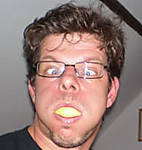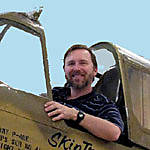Go to modelshipwrights.com for the current dynamic site!
1⁄700Building the IJN Tama
Building a 1942 IJN Tama in 1:700 Scale…
The IJN Tama was a light cruiser in the Imperial Japanese navy during the pacific war in WWII. It participated in many battles and skirmishes during the war. One of the most fascinating aspects of the ship is that during the beginning of the war it was fitted out with an “Arctic White” camouflage scheme. Very few smaller Japanese ships were painted with a camouflage scheme and it certainly would make for an interesting model.
I decided to make a model of this ship in this paint scheme. While I’ve modeled the Japanese navy in 1:700 scale for several years now, I had never tried to finish one with such an intricate paint scheme and decided to give it a try.
There is no dedicated photoetch set for 1:700 Tama so I improvised in a lot of areas. One set I consider a must when a dedicated set is not available is the Tom’s Modelworks IJN Carrier set A. This set not only provides railings, but many parts can be cut up and used on various aspects of the ship that I will describe later. I also decided to buy some of Aber’s Anti-Skid plate PP17. The size of the plating is slightly over scale but it matched the anti-skid plate molded onto the bow of the ship. The rest of my photoetch I had on hand in the parts box from years of modeling this navy in this scale. I also use a lot of fine wire, evergreen styrene and brass rod to augment detail and replace a few kit parts. I also had the Squadron book Japanese Light Cruisers of World War II. This is a reference book and there is a highly detailed line drawing of the Tama that fills the whole page.
First I started with the inside torpedo launchers. I decided to make a small internal area on my model even though it really will not be seen. I also sanded down the lower portion of the torpedo tubes and made replacements out of 0.5 styrene rod. I added a few other odds and ends pieces of styrene and wire for a bit more detail on the tops of the tube launchers. I made the floor out of 0.5 sheet styrene with a bit of scoring. (Fig 1-1)
I made all the porthole eyebrows out of wire wrapped around a drill bit then cut into sections and individually glued. (Fig 2-1 and 3-1) Stretched sprue on the bow was used to replicate seams in the bow seen on some cruisers. While possibly not accurate, I tend to do what I like and will look good on my models. After all, this is a hobby and getting enjoyment out of what you make should be the goal of every modeler.
I continued to add small bits of detail here and there on the model but kept the larger pieces unglued to ease painting the linoleum deck. The kit was good enough in most places. Only the walkway behind the superstructure( Fig 4-1 and 2) and the catapult deck(Fig 5-1 and 2) needed rebuilt from scratch.
Some other modifications are the forward torpedo tubes. Some wire, styrene and small photoetch reel ends were used for wheel s (Fig 6-1). Jackstays on the funnels are cut down two bar railings(Fig 6-2).
The bridge had the molded plastic windows removed. I used the flight deck netting from Tom’s Modelworks set for the large windows and ladders for the smaller ones. Styrene rod .75 in diameter was used for the lower mast supports and .o16 and .010 brass rod for the top masts. Lion Roar triangular perforate pieces made a much better supports for the upper mast radar and observation room(Fig 7-1). The rear mast was built much the same way. A spare crane and catapult from a Gold Medal IJN Auxiliary set completed the floatplane area(Fig 8-1).
After painting the larger pieces, I took very thin stretched sprue, and after painting it a gold color, glued lengths to the main deck just over the molded on brass lines the deck had and cut the excess off(Fig 9-1).
The stern booms were made of .016 brass rod and stretched sprue(Fig 10-1) the bow sounding platforms Flyhawk0 .3mm netting and sprue. You can see a few other styrene details I added after painting and the A-Line 40 links per inch chain used for the anchor chain(Fig 10-2).
The last photo shows some details I scratchbuilt, painted and added to the model(Fig 11-1).

























